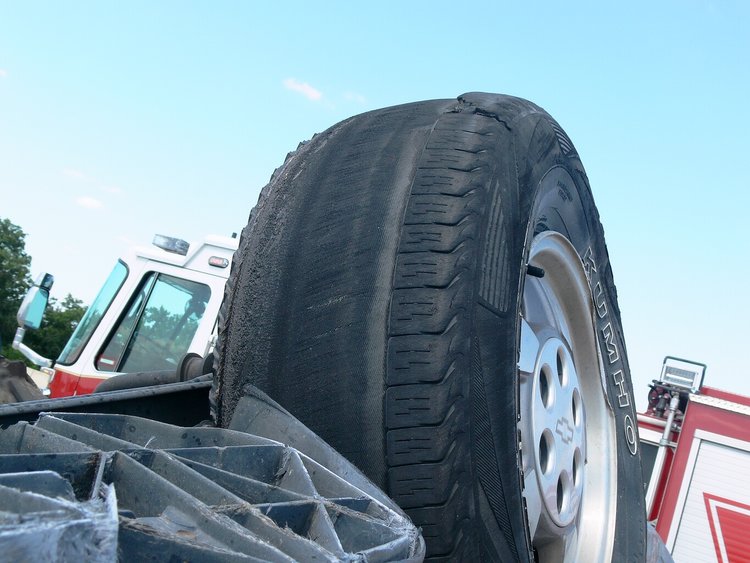
A common cause of motor vehicle crashes are tire failures, or what may often be referred to in accident reports as “blow-outs.” Crashes involving tire failures can result in serious and often fatal injuries. Although a tire failure may be easy to identify, it is far more difficult to determine what caused the tire to fail. Our law firm, Langdon & Emison, has experienced this scenario when investigating auto crash cases involving severe injuries or fatalities from defective tires.
A Fatal Tire Detread Accident
Our firm represented the family of an Arkansas man who tragically burned to death when the commercial truck he was driving overturned, fell off a bridge and caught on fire. At first glance, the case looked like a commercial truck accident, but when we investigated the case more closely, we discovered that a tire detread caused the loss of control. When we dug even deeper, we found a tire defect that was the ultimate cause of the accident and tragic loss of life.
Common Causes of Tire Failures
It is common to find failures in aged tires because they deteriorate over time. Poor design or manufacturing defects can also cause a tire to fail long before the end of its useful life (i.e., before the tread reaches a level of replacement). When evaluating an auto accident case, our attorneys look at several factors to determine if a defective tire was the culprit:
-
Age of the tire. All tires deteriorate with age, but older tires have a much higher risk of failure than newer tires with similar wear and tread depth. The tire and automotive industries have known for decades about the dangers of aged tires. Yet, many manufacturers still fail to provide an expiration date after which the tire should not be used. Other manufacturers provide an expiration date that is unrealistic. Worse, practical steps have not been taken to make consumers aware of this critical danger.
-
Design and manufacturing defects. Poor tire design and specification of tire components, such as too thin of an inner liner, can allow air flow to permeate the tire structure. This results in oxidation of the rubber components, making them brittle and susceptible to tearing, leading to tread separations. Further, tires are manufactured by hand through the work of tire builders. Poor plant conditions and improper placement of the various components, such as the belt plies, can also lead to premature failure.
When the rubber of a tire loses it elasticity due to oxidation, it is akin to laying a rubber band out in the sun—what was once a very elastic piece of rubber becomes fragile and susceptible to tearing. Heavy truck manufacturers commonly design tires with an inner liner similar to that found in some passenger tires, despite knowing the tires will be subjected to carrying much greater loads.
Are Your Tires Safe?
Whether driving a passenger or commercial vehicle, make sure your tires are safe. Each tire has a required Department of Transportation number imprinted on at least one of the sidewalls. The last four numbers are the most important to you.
Tires produced after January 1, 2000, have a four-digit code at the end of the DOT number. The first two digits represent the week of production and the last two digits represent the year of production. So, 4215 indicates the tire was produced the 42nd week of 2015.
The tires on your vehicle are the only link between you and the road, so be sure to check their condition regularly to keep you and your loved ones safe. When it comes to tire safety, don’t tread lightly.


